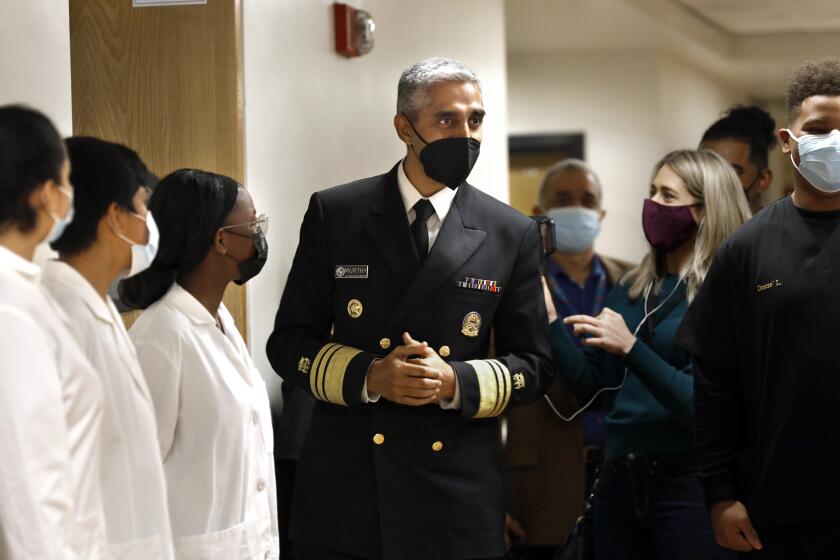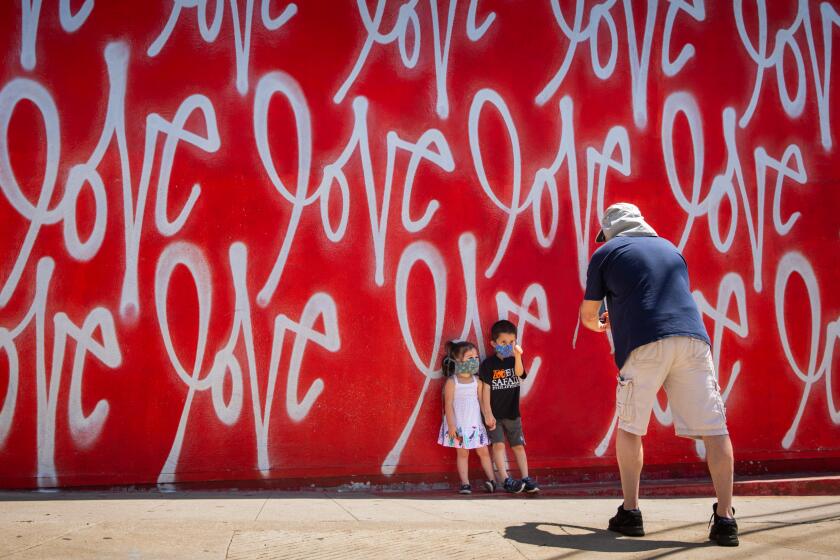Students wait months for mental health help. âWeâre bombarded,â counselor says
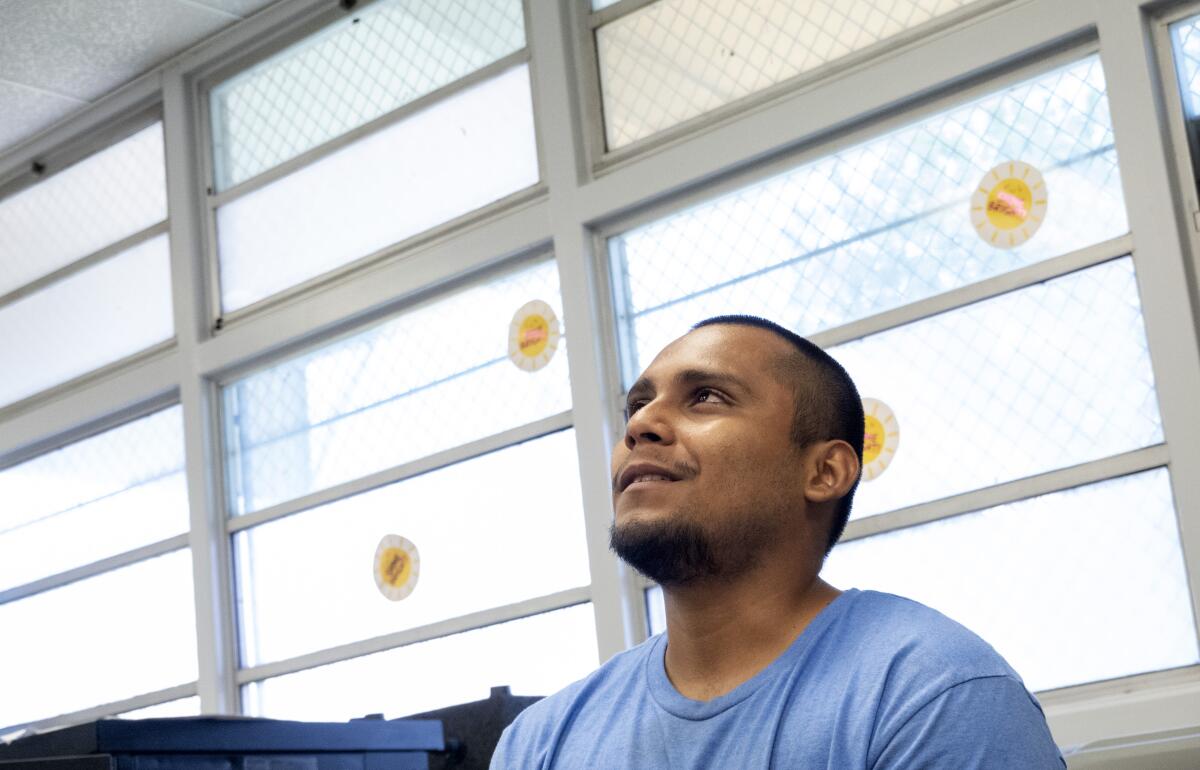
Leo PeĂąaloza was a freshman at San Bernardino High School when campuses closed as the pandemic hit. His father was hospitalized with COVID-19 for months, fighting for his life. Leoâs mother cared for his father by day and began working nights to keep their family afloat.
An only child, Leo spent months fearing for both of them. âThat took a toll,â he said, making it difficult to focus on school. He said he never talked about the stress.
âItâs like, pushing my feelings a little back, which sucks,â he said. âIt would have been nice to have someone that I could reach out to.â
Leo, now a senior, has still not met with a mental health counselor â joining the legions of California students who need immediate help, but canât get it in a state where the ability to deliver school-based mental health counseling and intervention is profoundly lacking. California ranks in the bottom five nationally behind states including Arizona and Minnesota in the number of counselors working in schools.
And while a massive influx of state dollars and pandemic relief funds is available to build mental health programs and hire school-based social workers and counselors, the labor force simply is not available â and there are few quick fixes, experts said.
In the meantime, school mental health professionals describe a troublesome reality: Countless children are in pain as they begin the third year of school amid the pandemic. Students and parents confront waits that are too long and counseling time that is too short. And mental health workers worry about overburdened schedules and their inability to reach all those seeking help.
The advisory is to call attention to a âyouth mental health crisisâ and recommend resources to call on and actions to take.
âWeâre bombarded,â said Belinda Barragan, an L.A. Unified counselor. âAnd the community agencies are also overwhelmed.â
When students canât get quick help, their troubles can ripple through school.
âIf you have a student in distress, itâs impacting their classmates, their classroom, their teacher,â said Alejandra AcuĂąa, retired associate professor of Social Work at Cal State Northridge. âThe student is suffering and so is anybody that cares about the student.â
For Leo, even his districtâs commitment to open mental health wellness centers at every school wonât happen soon enough. He and hundreds of other students will have graduated when the first new centers open in 2024.
âItâs important that they do it now,â he said.
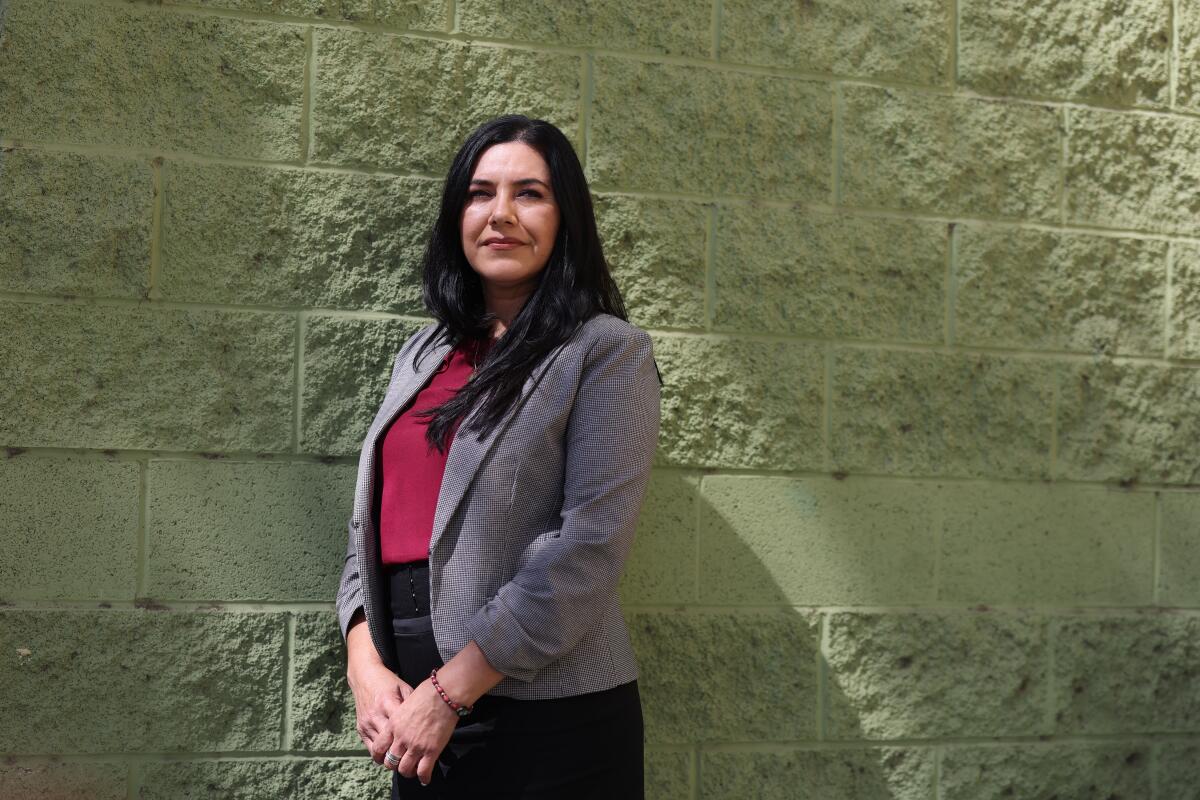
The dearth of professional assistance and dedicated campus wellness centers comes as experts across the state and nation are raising the alarm about a mental health crisis among youth. In California, rates of anxiety and depression among children shot up by 70% from 2016 to 2020, according to an analysis by the Annie E. Casey Foundation. Suicide rates among California youth increased by 20% in 2020 â even as all other age groups saw a decline, according to the California Department of Public Health. Youth struggling with such issues have difficulty learning in school; educators have reported increases in troubling student behavior.
L.A. Unified alone set aside $177 million to hire nearly 900 social workers and other mental health staff for the 2021-2022 school year. One year later, only about one third of the social workers had been hired.
Supt. Alberto Carvalho, who took over in February, called the move a âloftyâ idea that was never going to succeed. âI think we probably knew at the time that there would be little opportunity of filling those positions.â
The wellness centers that many districts see as one solution can take months, if not years, to launch, as can efforts to create and pay for school-based early intervention programs that experts say offer the best chance of broadly reaching youth.
In another pandemic school year, parents hope their children progress in academics, mental health and development. Many remain concerned amid more relaxed COVID measures.
Gov. Gavin Newsom has announced the state is investing $4.7 billion to improve mental health support for young people after what he called âdecades of neglect.â The plan seeks a âfundamental overhaul,â including making it easier for schools to provide treatment, creating virtual platforms to help assess children, developing suicide prevention programs and adding 10,000 school mental health providers â a more than 50% increase.
In making the announcement in August, Newsom described âa system that self-evidently has failed and continues to fail.â
âWe have a lot of work to do to turn that around. And thatâs not going to happen overnight.â
Waits, disappointment, anxiety
By the time she was a sophomore, school closures had forced her to withdraw to her bedroom and a summer of violence and protests followed. The teenager from Girls Academic Leadership Academy in mid-Wilshire felt more alone than ever.
When she was online, her social media feed had become a barrage of stories and images about violence against people who looked like her and her family. The girl, 15, requested that her name be withheld to protect her privacy.
âEvery time I did click someoneâs story, it was another Black man getting shot,â she said. âIt was another Black woman getting strangled, it was another knee on someoneâs neck.â
She began to experience periods of intense anger or penetrating sadness. All of it âmade me feel very afraid,â she said. âIt was fear. And it was anxiety. And it was me not wanting to walk down the street because I didnât know who would be around the corner.â
She knew she needed help but didnât have a way to get it. In the spring semester she learned her school was among the lucky ones that hired a social worker. She signed up for counseling.
More children are likely to experience toxic stress during the pandemic, which could lead to devastating effects in the future.
Every session, the counselor would get out her phone and say: âSiri, set a 30 minute timer,â she recalled. She doesnât blame the counselor â even short sessions helped her navigate friendships she struggled with since the pandemic â and she knew there were probably hundreds of students at her school with pressing needs.
But, she said, âthere was always a rushed tone about it.â Also, the counselor was white and she felt she couldnât understand her experience as a Black student. A few weeks later, she stopped going. Since then, she has been looking on her own for a counselor outside of school, but so far has had no luck.
âStepping into the new school year,â she said, âitâs still a struggle.â
âI have an anxiety attack and I canât walk down the hall to go see my school counselor because theyâre not on campus that day,â she said. âThereâs an imbalance in the resources that are available at our schools.â
Overwhelming need
In the eight years Kristina Avila has been a psychiatric social worker serving L.A. Unified students, she never had a school year as difficult as 2021-2022 â and she expects this year will be about the same.
The school wellness center at the Elizabeth Learning Center in Cudahy where she works was inundated with about 1,000 more student mental health referrals compared to previous years â requests to help students with anxiety, depression, suicidal thoughts and other mental health needs.
They are grief stricken â some lost one parent in the pandemic. Some lost both. Some students have anxiety so severe that they are nonverbal at school. The list of students was so long that desperately-in-need children sometimes waited two or three months for their first counseling appointment, Avila said.
âThe need has grown exponentially,â she said.
But the number of counselors covering the Los Angeles Unified School Districtâs 14 wellness centers â which accept referrals from among more than 430,000 K-12 students along with those at early education and adult education schools â slightly increased. Fifty-three last year and 57 this year.
âThere arenât many of us. Definitely not enough to fulfill that need,â Avila said.
In L.A. Unified during the last academic year, students waited an average of three and a half weeks for counseling through the districtâs clinics and wellness centers, which offer medical and mental health services. Social workers told The Times that waits were often much longer, up to three months. Students referred to community agencies for counseling also often wait months, counselors said.
Two weeks into the new school year, Barragan said, counselors are being inundated with students with behavioral issues.
âItâs really hard to get them connected to anyone right now. Local agencies are completely booked,â said Barragan, who works with expelled students. âMy colleagues and I have been making referrals to multiple agencies in the area and theyâre all at capacity or their waitlist is two months, just to get a phone call to make an appointment.â
Carvalho said the district is implementing stopgap measures as it continues to hire. He gave principals more flexibility to contract with outside providers, is working to bring university mental health interns onto campuses and to increase partnerships with outside agencies. He also said that social worker salaries have not been competitive with the private sector, which needs to be fixed.
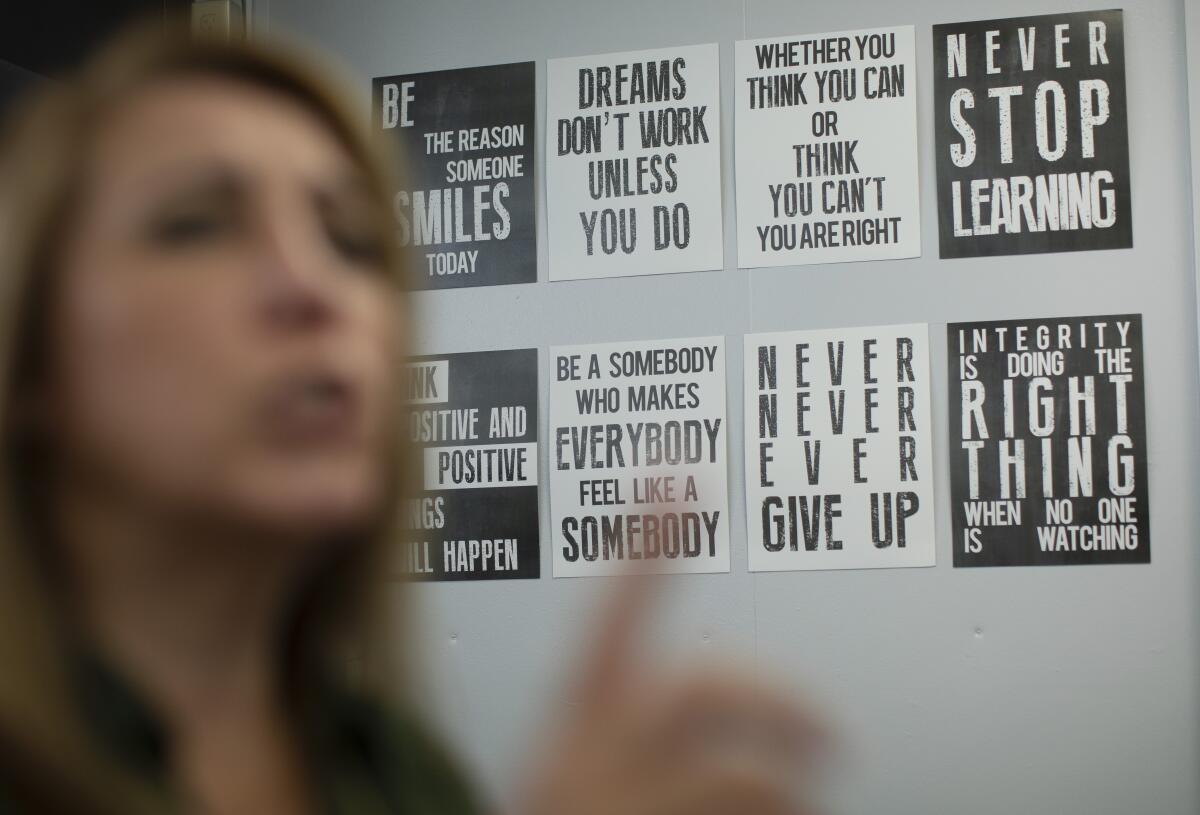
Statewide workforce shortage is no secret
The lack of mental health professionals across the state is a longstanding problem. A 2018 report from the Healthforce Center at UC San Francisco warned that if current trends continued, the state would soon âface substantial shortages of workers in all occupations relative to projected need for behavioral health services.â
Two years later, a state auditorâs report examining the role of state agencies in youth suicide prevention found that none of Californiaâs more than 1,000 school districts employed the number of mental health professionals recommended by the state Department of Education.
Across California, there are fewer than 1,000 school social workers â more than seven times below the stateâs recommended ratio of 1 per 800 students. There are about 10,400 school counselors, according to the American School Counselor Assn. Thatâs about one for every 572 students â an improvement from 2015, when there was about one counselor for every 700 students. But far short of the recommended 1:250 ratio.
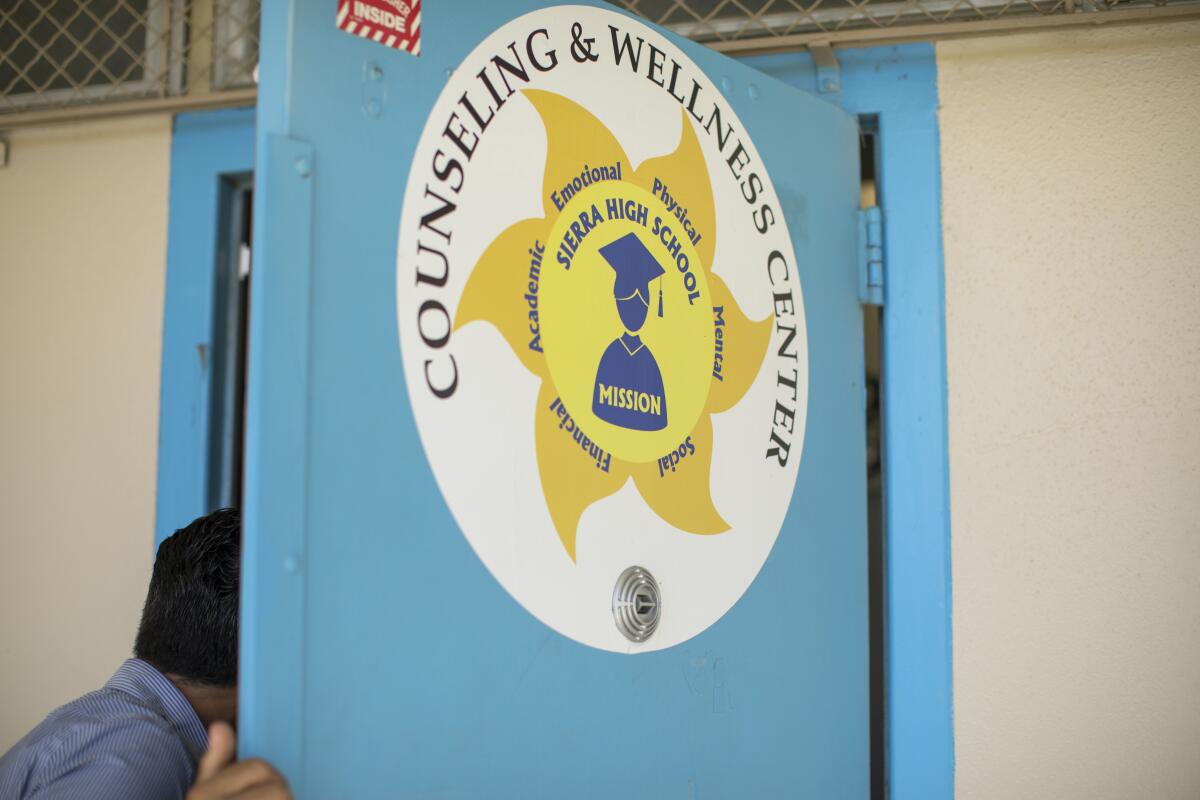
Schools rely on a combination of counselors, social workers and psychologists to meet the mental health needs of children. Counselors are often the first providers to interact with struggling students. Social workers can help children and their families address issues like poverty and domestic violence, and psychologists can evaluate and diagnose children.
The state is rolling out ambitious incentive programs, including $20,000 to cover tuition and expenses for aspiring counselors, social workers and psychologists who agree to work for at least four years in public schools, in hopes of recruiting 10,000 school mental health workers. That would increase the statewide workforce by more than 50%. But it wonât happen this school year.
The state currently educates about 2,000 school counselors every year, said Loretta Whitson, executive director of the California Assn. of School Counselors. A typical training program lasts about two to three years.
As part of its multibillion-dollar investment, the state last year launched the Children and Youth Behavioral Health Initiative, a five-year effort to redesign mental health systems, including a focus on prevention and better access to care. A mental health resources website has been launched and about $75 million in grants are being distributed to support wellness and mindfulness training for teachers and students. Earlier this year the state also awarded $649 million in grants to launch community school initiatives to turn campuses into neighborhood centers that help address outside barriers to learning.
Wellness centers offer a model for help
Sierra High School, a San Bernardino Unified School District continuation school, offers a case study in what it takes to establish comprehensive mental health services at one school.
Sierra Principal Hector Murrieta and his staff began work in 2017 after counselors were overwhelmed with incidents of fighting, outbursts of anger and sudden meltdowns. The city was still reeling from a mass shooting in December 2015 and facing a surge in local violence. Counselor Yesenia Ceballos said staff knew the students were hurting and felt their responses were reactive without getting at the root of problems.
In 2018 Murrieta gave up his office to create a âcalming roomâ for students. Four years later, the wellness center occupies two former classrooms and offers crisis care, individual and group therapy, telehealth medical visits, sexual assault survivor services and academic counseling. The school partnered with Loma Linda University to bring in mental health doctoral students to provide counseling. In return, the students earn credit toward their degrees.
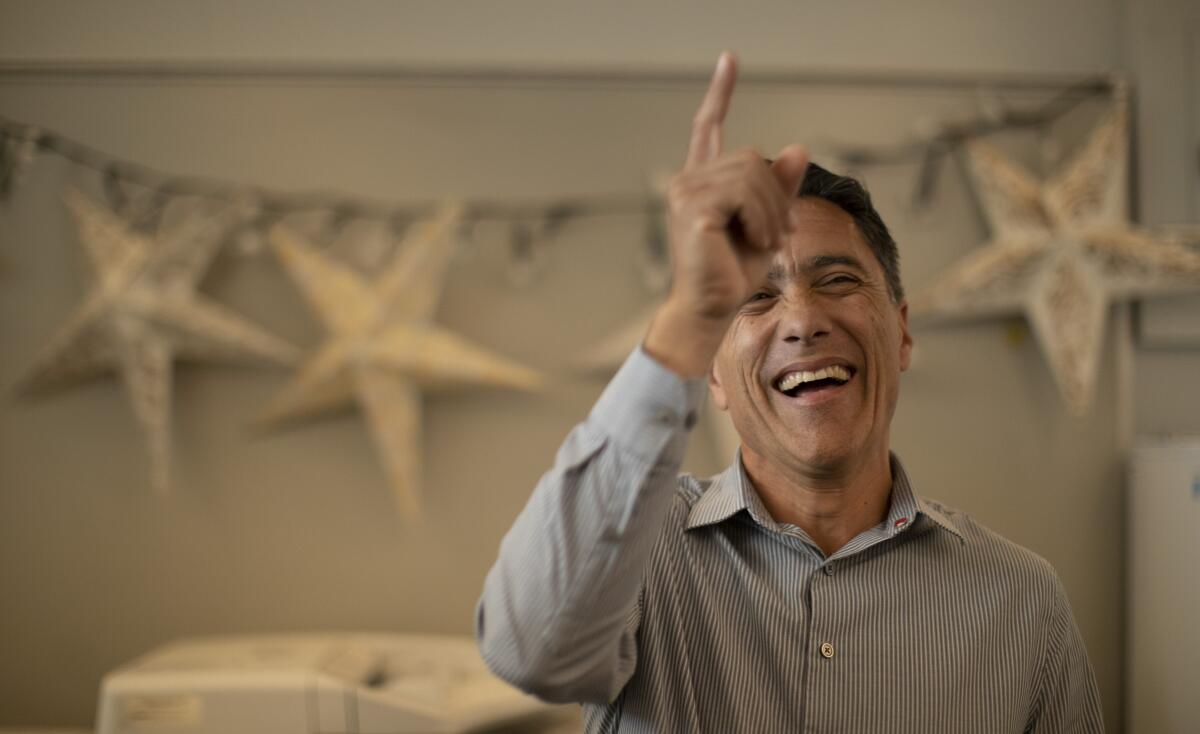
Abraham Chavarin, 18, was a student at Sierra when the pandemic hit and schools closed. In the months that followed, he was kicked out of his house. He lived with friends and family for a time, then in his truck, which heâd sometimes park near the high school at night to sleep. He felt like he was sitting âin silence in a dark corner. Trying to figure out how to turn on the light.â
When school reopened, Ceballos kept an eye out for him â ensuring that he had food and a place to shower.
When things got especially dark one day, he walked out of class and went to the wellness center. He met with Ceballos, who asked him if he had suicidal thoughts. Heâs not exactly sure why he opened up to her, he said, âI just did. ... She makes me feel comfortable. Itâs a good feeling talking to her.â
Ceballos helped him get a diagnosis and treatment for his mental health challenges. The trajectory hasnât been clean, but heâs doing better now, he said.
âThis is the first time I get real help,â he said. âI wouldnât be here if it hadnât been for her, probably.â
L.A. Times staff writer Marissa Evans contributed to this report.
More to Read
Sign up for Essential California
The most important California stories and recommendations in your inbox every morning.
You may occasionally receive promotional content from the Los Angeles Times.
